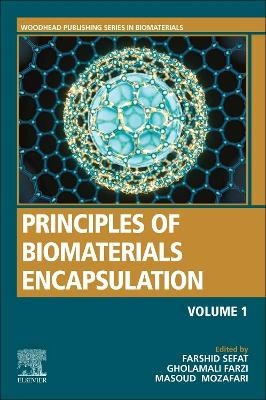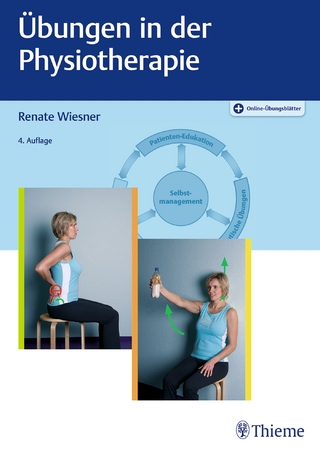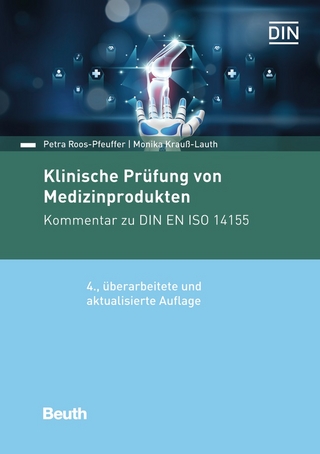
Principles of Biomaterials Encapsulation: Volume One
Woodhead Publishing (Verlag)
978-0-323-85947-9 (ISBN)
Written and edited by well-versed materials scientists with extensive clinical, biomedical and regenerative medicine experience, this book offers a deeply interdisciplinary look at encapsulation in translational medicine. As such, this book will provide a useful resource to a broad readership, including those working in the fields of materials science, biomedical engineering, regenerative and translational medicine, pharmacology, chemical engineering and nutritional science.
Dr. Farshid Sefat is Associate Professor and Programme Leader in the Biomedical and Electronic Engineering Department at the University of Bradford (UK). He was head of Biomedical Engineering Department at King Faisal University (Saudi Arabia) and Visiting Professor at Stevens Institute of Technology (New Jersey, USA). He completed his post doctorate research assistant at University of Sheffield (UK) in cornea tissue engineering. Dr. Sefat received his Ph.D. and BEng. degrees from University of Bradford in Biomedical Engineering. His research is based on developing biomaterials to control cellular behavior with particular emphasis in developing engineered materials for various tissue engineering applications. He’s an author of >150 peer-reviewed journal articles, editorials, and review papers and >80 book chapters/edited books. He’s on the editorial boards and reviewer of >30 numerous journals including Materials Today, Acta Biomaterialia, IEEE, Bone, MDPI, Journal of Orthopaedics & Rheumatology, Materials Science and Engineering C and Journal of Biomechanics. Dr. Gholamali Farzi is a Professor of Polymer Engineering at Faculty of Engineering in Hakim Sabzevari University, Sabzevar, Iran, where he is teaching polymer engineering and polymer composite materials for students in Ph.D. and MSc level. Dr. Farzi obtained his Ph.D. from the University of Lyon (France) in 2007, then he completed his post-doctoral fellowship in University of Lyon 1. Dr Farzi doing extensive research in the field of polymer encapsulation and he has very close collaboration with French universities. Dr. Masoud Mozafari is a Fellow at Lunenfeld Tanenbaum Research Institute, Mount Sinai Health Hospital, University of Toronto. He was previously Assistant Professor and Director of the Bioengineering Lab, at the Nanotechnology and Advanced Materials Department, Materials and Energy Research Center, Cellular and Molecular Research Center, and Department of Tissue Engineering and Regenerative Medicine of the Iran University of Medical Sciences (IUMS), Tehran, Iran. Dr. Mozafari’s research interests range across biomaterials, nanotechnology, and tissue engineering, and he is known for the development of strategies for the treatment of damaged tissues and organs, and controlling biological substances for targeted delivery into the human body. Dr. Mozafari has received several awards, including the Khwarizmi Award and the Julia Polak European Doctorate Award for outstanding translational research contributions to the field of biomaterials. He has also received the WIPO Medal for Inventors from The World Intellectual Property Organization (WIPO), in recognition of his contributions to economic and technological development. Dr. Mozafari is currently working on the editorial board of several journals.
Section One – Introduction 1. An introduction to biomaterials encapsulation 2. Encapsulation techniques overview
Section Two – Encapsulation Principles and Techniques 3. Encapsulation of bioactive compunds: Role of nanotechnology 4. Morphology control in encapsulation 5. Encapsulation: Advances in cell encapsulation 6. Encapsulation: Spray chilling and cooling 7. Encapsulation: Spinning disk technology 8. Encapsulation: Fluidized bed coating technology 9. Encapsulation: Microemulsion 10. Encapsulation: Electrospray 11. Encapsulation: Melt dispersion 12. Encapsulation: Pan-coating 13. Encapsulation via electrospinning technology 14. Microencapsulation: Spray drying 15. Microencapsulation: Air suspension technique 16. Microencapsulation: Polymerization 17. Microencapsulation: Coacervation phase separation 18. Microencapsulation: Solvent evaporation 19. Microencapsulation: Extrusion 20. Microencapsulation: Dripping and jet break-up 21. Microencapsulation: Annular jet process 22. Microencapsulation: Phase inversion precipitation 23. Cell microencapsulation
| Erscheinungsdatum | 17.10.2022 |
|---|---|
| Reihe/Serie | Woodhead Publishing Series in Biomaterials |
| Zusatzinfo | 250 illustrations (50 in full color); Illustrations |
| Sprache | englisch |
| Maße | 152 x 229 mm |
| Gewicht | 1000 g |
| Themenwelt | Medizin / Pharmazie ► Medizinische Fachgebiete |
| Medizin / Pharmazie ► Physiotherapie / Ergotherapie ► Orthopädie | |
| Technik ► Maschinenbau | |
| Technik ► Medizintechnik | |
| Technik ► Umwelttechnik / Biotechnologie | |
| ISBN-10 | 0-323-85947-X / 032385947X |
| ISBN-13 | 978-0-323-85947-9 / 9780323859479 |
| Zustand | Neuware |
| Informationen gemäß Produktsicherheitsverordnung (GPSR) | |
| Haben Sie eine Frage zum Produkt? |
aus dem Bereich


